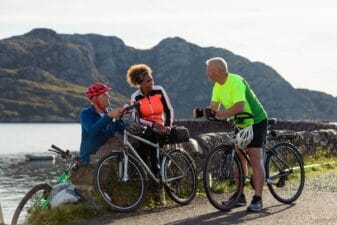I’m looking at some of your favourite FTSE 100 companies and examining how each will deliver their dividends.
Today, I’m putting oil supermajor Royal Dutch Shell (LSE: RDSB) (NYSE: RDS-B.US) under the microscope.
Dividend policy
Helpfully, Shell sets out its dividend policy within the investor section of its website — something many companies could do well to emulate. Shell tells us:
“Our policy of growing the US dollar dividend at least in line with inflation changed at the beginning of 2010. The new policy is to grow the US dollar dividend in line with our view of the underlying earnings and cash flow of Shell”.
The company adds that the board of directors will consider a range of factors, including:
- “the macro environment”
- “the current balance sheet”
- “future investment plans”
Finally, Shell also tells us that its policy is to pay dividends quarterly.
From old policy to new
Because Shell reports in dollars and sets the dividend accordingly, UK investors who receive dividends in sterling are — for better or worse — at the mercy of prevailing exchange rates.
Nevertheless, shareholders had some clarity on what to expect under Shell’s old policy of growing the dollar dividend at least in line with inflation. In contrast, while there’s a good bit of information within the new policy, there are no quantitative measures with which shareholders can hold management to account.
For the last year under Shell’s old policy the board increased the dividend by an ahead-of-inflation 5% to $1.68. No sooner had the new policy come into play than the board held the dividend flat for the year … and for the next year.
Dividend growth only resumed during 2012 when the payout was raised to $1.72 — a modest 2.4% increase. However, 2013 has started more promisingly with the board increasing the first-quarter dividend by 5%.
Still, at the end of the day, management can do whatever it likes with the dividend: any move in the payout — up, down or sideways — can be claimed by the board to be in line with the dividend policy. In effect, the board has given itself considerably more flexibility to restrict cash returns to shareholders than it had under the old policy of growing dividends at least in line with inflation.
To be fair to Shell, it’s difficult for companies within cyclical or commodity sectors to be steady dividend payers, unless they set the payout at such a low proportion of earnings that they’re able to raise the dividend smoothly through the ups and downs of economic cycles and volatile commodity prices.
However, a low payout ratio isn’t what investors want from a mature company such as Shell, so there are always likely to be spells of dividend acceleration and dividend stagnation as earnings wax and wane. And, of course, the dollar-sterling exchange rate on Shell’s dividend adds another erratic element to the equation.
If you already own shares in Shell — or are thinking of investing in the company — you may wish to read this free Motley Fool report. You see, the dividend blue chip analysed in the report comes from a non-cyclical sector and could be a great complement to the more volatile income of a company such as Shell.
Our top income analyst believes the featured company will provide investors with steady annual dividend growth for many years to come. Not only that, but he calculates the stock is trading today at a 10% discount to current fair value.
To read the in-depth analysis of this dividend dynamo for free, simply click here.
G A Chester does not own any shares mentioned in this article.






